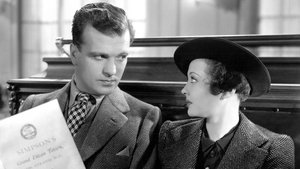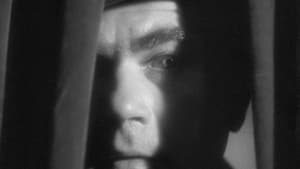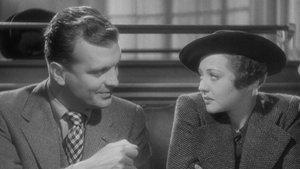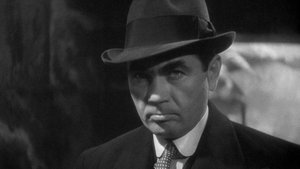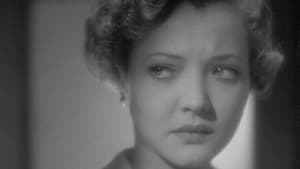Contact: info@alwanfilm.com
Video Sources 0 Views
- Watch trailer
- Sabotage


Synopsis
Table of Contents
ToggleReview: Sabotage 1937 Colorized – A Gripping Thriller of Espionage and Deception

Introduction
“Sabotage” (1937) stands as a landmark achievement in the realm of espionage thrillers, weaving a gripping tale of intrigue and deception that keeps audiences on the edge of their seats from start to finish. In this article, we’ll delve into the significance of this classic film, exploring its impact on the world of cinema and its enduring legacy in the realm of suspense thrillers.
Check The Full Colorized Movies List
Check Our Colorized Movies Trailer Channel
Understanding Sabotage 1937 Colorized: Director, Cast, and Genre
Directed by the legendary Alfred Hitchcock, “Sabotage” (1937) showcases his mastery of suspense and his ability to keep audiences guessing until the very end. The film features a talented cast led by Sylvia Sidney, Oscar Homolka, and John Loder, whose compelling performances bring the intricate plot to life on screen. Blending elements of espionage, romance, and psychological drama, “Sabotage” (1937) immerses viewers in a world of danger and deception where nothing is as it seems.
Exploring the World of Sabotage 1937 Colorized: Plot and Characters
At its core, “Sabotage” (1937) follows the exploits of a London-based spy ring, led by a sinister figure known only as “The Professor,” as they plot to unleash a wave of terror on the city. Caught in the midst of the conspiracy is the unsuspecting wife of one of the ring’s members, whose loyalties are put to the test as she grapples with the moral implications of her husband’s actions. As the tension mounts and the stakes escalate, the stage is set for a thrilling showdown that will determine the fate of an entire nation.
The Art of Film Colorization
While “Sabotage” (1937) was originally filmed in black and white, its timeless appeal and enduring popularity have prompted modern audiences to revisit the film in a colorized format. Through the process of digital colorization, the film’s stark imagery is brought to life in vibrant hues, enhancing the visual experience and inviting viewers to rediscover the magic of Hitchcock’s classic thriller in a whole new light.
Early Colored Films: A Brief History
The history of colored films dates back to the early days of cinema, with filmmakers experimenting with various techniques to add color to their creations. From hand-painted frames to early Technicolor processes, the evolution of colored film has been marked by innovation and experimentation, paving the way for the development of modern colorization techniques that continue to captivate audiences to this day.
Sabotage 1937 and Its Early Colored Version
The decision to release “Sabotage” (1937) in a colorized format was met with both excitement and skepticism. While purists expressed concerns about the potential impact on the film’s visual aesthetic, others welcomed the opportunity to experience Hitchcock’s classic thriller in vibrant color. Ultimately, the early colored version of “Sabotage” (1937) offers viewers a fresh perspective on the film’s timeless themes and enduring appeal, inviting them to rediscover the magic of Hitchcock’s masterwork in a whole new light.
The Debate Over Film Colorization
The debate over film colorization continues to rage on, with proponents arguing that it breathes new life into classic movies and introduces them to a new generation of viewers, while detractors maintain that it compromises the artistic integrity of the original work. As filmmakers and audiences alike grapple with the implications of colorization, the debate serves as a reminder of the complex interplay between art, technology, and tradition in the ever-evolving landscape of cinema.
Examining Sabotage 1937 as an Early Colored Film
As with any colorized classic, the impact of colorization on “Sabotage” (1937) is a matter of personal interpretation. Some may argue that it enhances the film’s visual appeal and immerses viewers in its world, while others may feel that it detracts from the stark beauty of the original black and white version. Regardless of one’s stance on the issue, there’s no denying the enduring power of “Sabotage” (1937) as a timeless thriller that continues to captivate audiences with its masterful storytelling and unforgettable characters.
Influence and Legacy: Sabotage 1937 Colorized’s Impact on Cinema
“Sabotage” (1937) has left an indelible mark on the world of cinema, inspiring countless filmmakers and captivating audiences with its timeless tale of suspense and intrigue. From its unforgettable performances to its thrilling plot twists, the film continues to resonate with viewers of all ages, reaffirming its status as a beloved classic of the thriller genre.
Director’s Cinematic Legacy: Beyond Sabotage 1937 Colorized
Alfred Hitchcock’s influence extends far beyond “Sabotage” (1937), with a diverse body of work that continues to captivate audiences around the globe. From “Psycho” to “Vertigo,” Hitchcock’s films are celebrated for their innovative storytelling, masterful direction, and iconic suspense sequences, solidifying his legacy as one of the greatest filmmakers of all time. Through his groundbreaking work, Hitchcock has left an indelible imprint on the world of cinema, inspiring generations of filmmakers to follow in his footsteps.
Themes Explored in Sabotage 1937 Colorized
“Sabotage” (1937) explores a myriad of themes, from the nature of evil to the complexities of human nature. Through its richly drawn characters and intricate plot twists, the film invites viewers to ponder the moral implications of espionage and the consequences of betrayal. As audiences immerse themselves in the world of “Sabotage” (1937), they are reminded of the fragile balance between trust and suspicion, and the thin line that separates right from wrong.
Reception and Controversy Surrounding Sabotage 1937 Colorized
Upon its release, “Sabotage” (1937) received widespread critical acclaim, with many praising its taut suspense, atmospheric cinematography, and Hitchcock’s masterful direction. However, the decision to release the film in a colorized format sparked debate among purists, reigniting the age-old discussion surrounding film preservation and artistic integrity. Despite the controversy, “Sabotage” (1937) remains a beloved classic that continues to captivate audiences with its timeless tale of espionage and intrigue.
Where to Watch Sabotage 1937 Colorized Online
For those eager to experience the timeless magic of “Sabotage” (1937), the film is readily available on popular streaming platforms such as Netflix, Amazon Prime, and Hulu. Whether you choose to watch it in its original black and white format or the early colored version, “Sabotage” (1937) promises to transport you to a world of suspense and intrigue, where danger lurks around every corner and nothing is as it seems.
FAQs About Sabotage 1937 Colorized
Q: Is “Sabotage” (1937) based on a true story? A: No, “Sabotage” (1937) is a fictional tale crafted by screenwriters Charles Bennett and Ian Hay, who drew inspiration from real-life events and their own imaginations.
Q: Who are the main actors in “Sabotage” (1937)? A: “Sabotage” (1937) features a talented ensemble cast led by Sylvia Sidney, Oscar Homolka, and John Loder, whose compelling performances bring the film’s characters to life with depth and nuance.
Q: What awards did “Sabotage” (1937) win? A: While “Sabotage” (1937) did not win any major awards, it received critical acclaim for its taut suspense, atmospheric cinematography, and Hitchcock’s masterful direction.
Q: Why was “Sabotage” (1937) released in a colorized format? A: The decision to release “Sabotage” (1937) in color was made to introduce the film to a new generation of viewers and enhance its visual appeal for modern audiences. While the choice to colorize the film sparked debate among purists, it ultimately allowed “Sabotage” (1937) to reach a wider audience and ensure its continued relevance in the annals of cinematic history.
Conclusion
As we reflect on the enduring legacy of “Sabotage” (1937), let us celebrate its status as a timeless classic that continues to captivate audiences with its masterful storytelling and unforgettable characters. Whether viewed in its original black and white format or the early colored version, “Sabotage” (1937) remains a shining example of the power of cinema to thrill, entertain, and provoke thought. So, whether you’re a seasoned cinephile or a casual moviegoer, take a moment to revisit “Sabotage” (1937) and experience the magic of Hitchcock’s classic thriller as never before.
